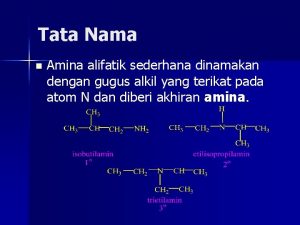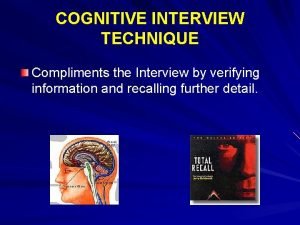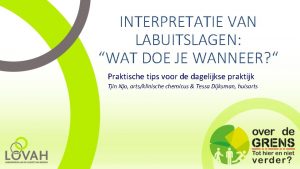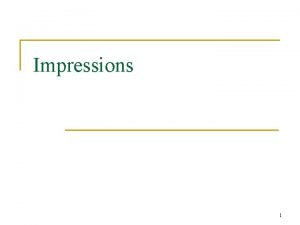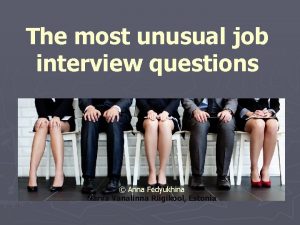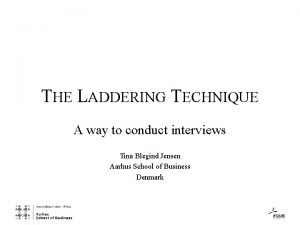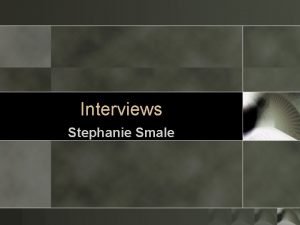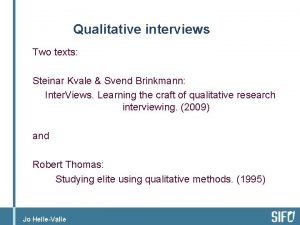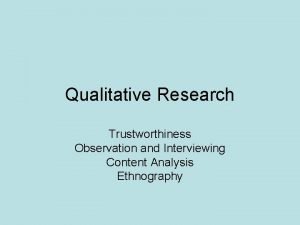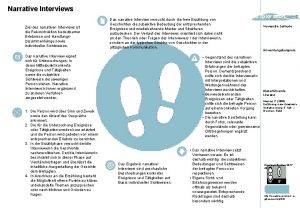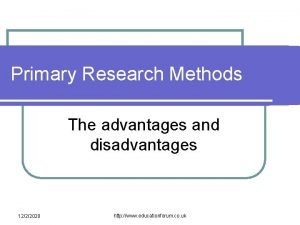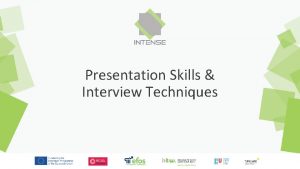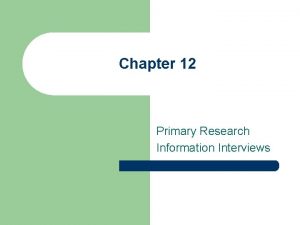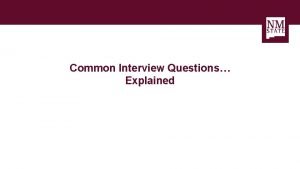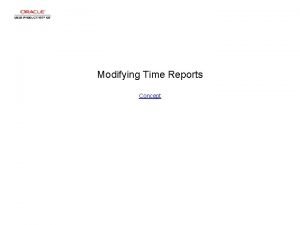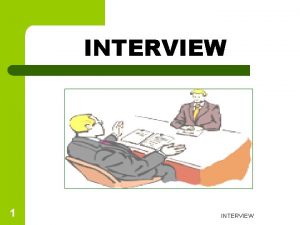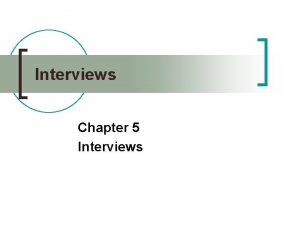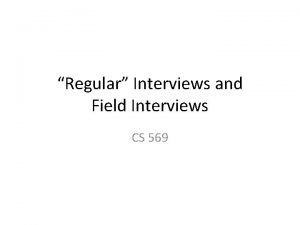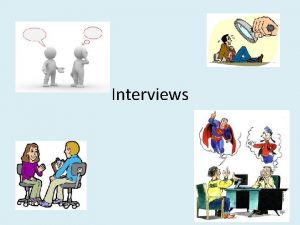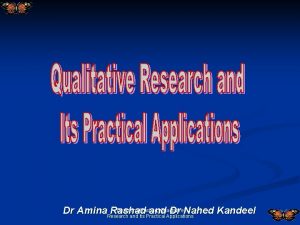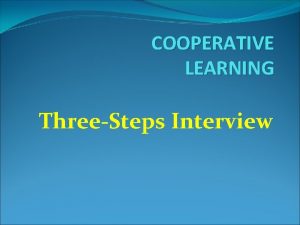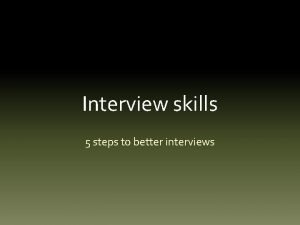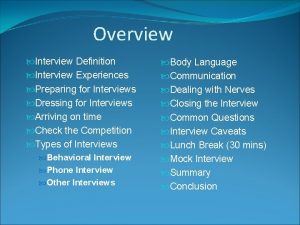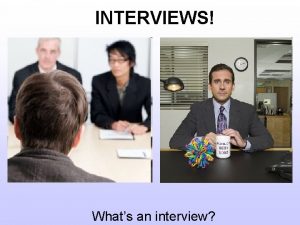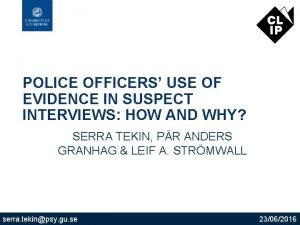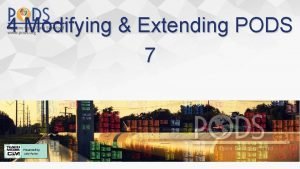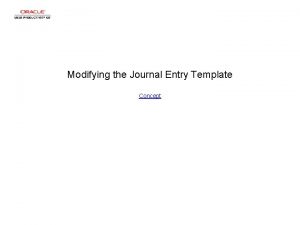Modifying the Cognitive Interview for suspect interviews Amina


























- Slides: 26

Modifying the Cognitive Interview for suspect interviews Amina Memon

Aims Contemporary approaches to investigative interviewing n Identifying the best approach for your interviewee (witness/suspect) n The reluctant suspect/witness n A structure for training and systematic evaluation n

What have we got? n The Cognitive Interview (CI) - national level to police (since about 1990)-extensive scientific literature. n The Conversation management (CM) approach (Shepherd 1983)- 1 empirical study. n PRICE model

Developments in Investigative interviewing Modifications to the Cognitive Interview

Modified CI n n n Rapport & Transfer of Control Mental reinstatement of context or a sketch plan* Report in Detail Free recall followed by open questions Replace the change order instruction with an additional retrieval (free recall). *Dando et al 2008

Modified CI is most popular in research and practice based on 55 studies; Memon et al. 2008)

Using Modified CI with Strategic Use of Evidence (Granhag) n n n Planning Rapport Context/Sketch and report everything with free recall Probe by “addressing” the evidence but do not let on (exhaust alternatives) Confirm/Challenge* * But note Dando & Bull’s: tactical approach

Application: Deception Detection n Statement evidence inconsistency Get detail and rule out alternative accounts before disclosing evidence n Use of sketch plan (Hartwig, Granhag et al 2005; Vrij, Granhag, et al 2008)

The interviewee n There are many different kinds of witness/suspect

Consider for each Interviewee (Witness or suspect) Ability to tell Unable Able Source: Mark Robinson: Kent Police

Consider for each Interviewee (Witness or suspect) Willingness to tell Unwilling

Consider for each Interviewee (Witness or suspect) Willing but unable Willing and able Unable Able Unwilling and unable Unwilling but able Unwilling Model developed by Kent Police

Consider for each Interviewee (Witness or suspect) Willing Modified CI (PRICE) With SUE Could be a vulnerable individual: Wants to please False Confession Unable Able Modified CI with SUE Use elements of CM? Problem! Unwilling Adapted: Kent Police

The unwilling witness n n Due to trauma, fear, hostility, uncertainty? Too many investigators skip the rapport phase because they are not collecting evidence at this point. Rapport provides a chance for the investigator to directly address the witness’s reluctance to talk, the motivational barrier. Effective rapport allows the rest of the CI to be implemented. (Fisher, 2009)

The current situation Developments in training

Clarke & Milne (2001) n Interviewing was poor n Limited use of CI n Closed questioning style n Interviewer driven and confirmatory “far more leading questions asked, most interviewers didn’t allow the witness to tell their account and the interviews were mainly police led”

ACPO (2003) interviewing strategy n The new ACPO Strategy introduced 5 separate Tiers of Training for PEACE (and CI) each of which is set against National Occupational Standards. n Each tier has a training implication. n Each tier recommends that competencies MUST be met at each level for progression to the next level.

To date No evaluation of PRICE

“Having considered the transcript of the interview, we are driven to the conclusion that some of the questions put by the interviewing police officer can only be described as outrageous” Lord Hamilton’s comments during Luke Mitchell’s appeal against the murder of Jody Jones http: //www. scotcourts. gov. uk/opinions/2008 HCJA 28. html

Good Practice Peebles vs HMA The DC leading the enquiry identified special needs and appointed appropriate adult

Proposal for Scottish Police n Use the modified CI (rapport building) to improve information gathering in interviews where witnesses have information but may be reluctant to disclose n Use evidence strategically within the PRICE model

Proposal for Scottish Police n Develop a structure for training and monitoring/assessment of training at different levels

For details of my recent research go to: http: //www. abdn. ac. uk/~r 03 kah 6/eyewitness/ Acknowledgements European Union Framework 6 Grant

CM n n n Reciprocity: if someone smiles, you smile back, show you are aware of how witness feels) Response: Mindful behaviours for relationship building. Managing the interview: the relationship with the interviewee, the conduct of persons present and content. Planning is key to identify topics to be covered and areas of questioning within each topic.

Interviewing models PRICE n Preparation n Rapport n Information n Confirmation n Evaluation PEACE n Preparation n Explain & Engage n Account n Closure & Evaluation

Application n Witnesses in sexual offence investigations -Welfare is paramount -Addressing needs and fears -Explain purpose and transfer control -Report Everything (open questions). -Be flexible, return to rapport building any time the witness feels uncomfortable.
 Etil metil amina
Etil metil amina Cognitive and non cognitive religious language
Cognitive and non cognitive religious language Cognitive interview definition
Cognitive interview definition Forgetting in psychology
Forgetting in psychology No baby must weep poem
No baby must weep poem Suspect identification
Suspect identification Segmentkernigen te laag
Segmentkernigen te laag Question hierarchy
Question hierarchy What is used to make a cast of a tool mark?
What is used to make a cast of a tool mark? Unusual job interviews
Unusual job interviews Combines natural observation with personal interviews
Combines natural observation with personal interviews Laddering interview technique
Laddering interview technique Disadvantages of unstructured interviews
Disadvantages of unstructured interviews How to conduct an interview for qualitative research
How to conduct an interview for qualitative research 4 phases of rpms cycle
4 phases of rpms cycle Disadvantages of unstructured interviews
Disadvantages of unstructured interviews Ethnography research topics
Ethnography research topics Narrative interviews
Narrative interviews Primary research methods advantages and disadvantages
Primary research methods advantages and disadvantages Lean discovery
Lean discovery What are exit interviews
What are exit interviews Type scale
Type scale Qualitative vs quantitative data analysis
Qualitative vs quantitative data analysis Primary research interviews
Primary research interviews What is observation in primary research
What is observation in primary research Interview disclaimer
Interview disclaimer What are my strengths
What are my strengths
